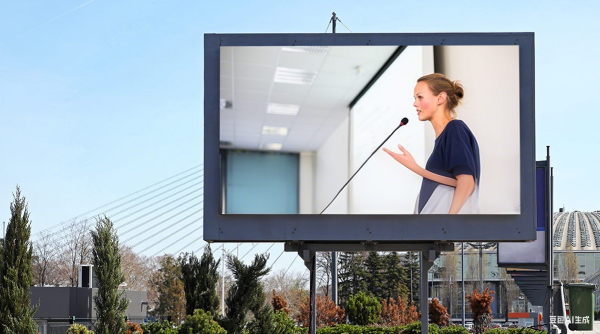Which Video Kiosk Solution Is Suitable For Your Business Scenario?
What is a Video Kiosk?
A video kiosk is an interactive, self-service terminal designed to engage users through video content, provide information, or facilitate live video communication. Commonly found in public spaces like retail stores, healthcare facilities, and government offices, these kiosks enhance customer experience, automate services, and deliver dynamic information efficiently.
Key applications for a video kiosk include:
- Retail & Customer Service: Use kiosks for in-store product demonstrations, promotional videos, and connecting customers with remote support agents via live video chat.
- Healthcare & Telemedicine: Allow patients to check-in for appointments, consult with doctors remotely via secure video calls (telehealth), and access health education videos.
- Government & Public Services: Provide citizens with access to information, help with filling out forms, or connect them with public officials for virtual assistance, reducing wait times.
- Corporate & HR: Streamline visitor management with video check-ins, conduct employee training, and facilitate remote job interviews in office lobbies.
- Hospitality & Tourism: Offer virtual concierge services, showcase local attractions through video tours, and provide a seamless self-service check-in/check-out experience.

Before purchasing these video display kiosks, it’s a must to know where you’ll be investing your money. In the next few sections, we will give you a rundown of these kiosks. From basic playback to advanced controls, you’ll understand how they work and what’ll be the best option for your team.
1Basic Video Kiosk Mode: Easiest Setup for Video Playback
If you want an immediate and stable display solution, this might be the best solution for you.
Without much of the backend to deal with, the basic video kiosk is made for businesses that want to use their devices as a standalone video-looper.
The setup demands little to no technical maintenance as it runs independently within your cloud infrastructure. They’re great for fixed content displays but must be installed in areas with consistent visibility and with protection from tampering.
This mode prioritizes stability and uptime over flexibility by eliminating dependencies on networks, CMS platforms, or external control panels. The interface is minimal, and there’s little to no learning curve, designed for fast deployment and hands-off operation.
1.1 Key Features
- Effortless Setup & Operation: Devices are activated through a three-step configuration: install the APK, enable kiosk mode, and set the default launcher. No ADB commands or debugging required. The system also features a Gravity Sensor Adaptive mechanism that adjusts screen orientation automatically based on physical positioning, whether the device is mounted in portrait or landscape.
- Broad Content Format Support: The platform supports the three primary media categories: video files (MP4, MKV), image files (JPG, PNG, GIF), and web content through direct URL playback. These formats can be used individually or mixed within a single looped sequence.
- Flexible Content Management: Users can apply Smart Schedule Templates to define weekday or weekend playback cycles. Media ordering is handled via drag-and-drop interaction. Playback behavior can also adjust dynamically based on motion detection, device location, or battery status, such as dimming the screen when power runs low.
- Reliable Playback & Security Assurance: Playback resumes automatically after restarts or wake events. The system skips unplayable files to maintain loop integrity and restarts the app if critical errors occur. Security features include password protection for admin access and full lockdown options for rooted devices to prevent unauthorized system modifications.
Recommended software: BurningThumb Video Kiosk provides a stable, user-friendly environment for basic deployments. Video Kiosk – Android adds moderate layout customization while preserving simplicity.
1.2 What Are the Main Uses of Basic Video Kiosks in Business?
- Retail Stores: Loop promotional videos and new product images to capture customer attention and boost product exposure.
- Schools: Use it as a digital bulletin board to display campus event photos and announcement videos, getting the word out fast.
- Gyms: Play fitness tutorial videos or facility introductions to enrich members' experiences without complex operations or maintenance.
2Optimize Video Kiosks: Advanced Features & Remote Control
Basic playback might get content on a screen, but it doesn’t scale.
Businesses managing multiple displays across locations need a smarter system. One that handles layout control, supports content scheduling, and allows administrators to push updates remotely.
Optimized video kiosk setups are built to solve exactly that, offering remote accessibility, flexible display architecture, and support for more advanced triggers and inputs.
This level of functionality moves beyond simple looped playback. It's engineered for operational efficiency, visual versatility, and administrative oversight, all delivered through cloud-connected platforms that don't require local interaction.
Kiosks can be updated, monitored, and customized from a distance, making them ideal for dynamic environments with changing content needs.
2.1 Key Features
- Advanced Display Customization: Layout options extend beyond full-screen video. Fully Video Kiosk supports complex configurations where the main content runs alongside real-time data elements like time, news feeds, or weather. Widgets can be placed on the edges of the screen, allowing auxiliary information to enhance the main display without overwhelming it. 42 Digital Signage Kiosk Solution offers similar customization with multi-zone flexibility, giving businesses the control to assign unique content blocks for promotions, schedules, or static branding.
- Remote Management & Updates: Device status can be viewed in real time, including battery levels, connectivity status, and playback progress. All of this can be monitored from a centralized console. Admins can upload new content and push configuration changes instantly, removing the need for on-site staff. If a retail campaign shifts overnight, video and graphic assets can be updated across every branch within minutes, providing message consistency chain-wide.
- Multi-Scenario Adaptive Components: HDMI-CEC support allows kiosks to control connected screens without additional hardware. Input methods extend beyond touch: remotes, swipe gestures, keyboards, and even game controllers can be configured to trigger actions or switch content. Visual layers like brand logos and background imagery can be applied without editing the base media. Industry-specific options include timed USB charging, local content storage, or event-based triggers tailored to specific business workflows.
Recommended software: AirDroid Business is best for Android video kiosk control and management, Rise Vision provides extensive template libraries and cloud-based management for scalable, diverse digital signage needs.
2.2 What Are the Main Uses of Optimize Video Kiosk in Business?
- Large Shopping Malls: Their powerful split-screen and customization features excel in displaying diverse store information, promotions, and navigation guides on digital signage in different areas.
- Hotels: These kiosks can be used in lobbies, elevators, and other locations to display room information, dining recommendations, and tourist attractions. Remote management allows for constant updates, enhancing service quality and operational efficiency.
- Transportation Hubs: Airports and train stations can use them to display flight/train information, safety announcements, and commercial advertisements, meeting the information needs of a large volume of travelers.
3Kiosk Beyond Display: Real-Time Communication & Security
While most kiosks focus on content playback or display automation, certain environments demand more, specifically live interaction. In sectors where real-time support, secure document exchange, and communication continuity are important, kiosks need to function more like remote service terminals.
Unlike passive signage, these kiosks are active service nodes. They connect to internal conferencing servers, integrate with CRM systems, and maintain encrypted communications throughout. The goal is seamless, secure interaction (whether in a bank branch, clinic, or government office) without requiring physical staff presence on-site.
3.1 Key Features
- Real-Time Video Communication: Enables direct customer interaction via the enterprise’s own conferencing server, allowing remote assistance without third-party call costs.
- High-Definition Interactive Experience: Supports HD video, network-adaptive streaming, media sharing, and built-in call routing to offer responsiveness and clarity during sessions.
- High-Security Standard Assurance: Operates within closed networks, using proprietary encryption protocols, TLS 1.3, and secure server storage to protect sensitive user data.
- Integration & Expansion Capabilities: Converts calls to SIP protocol for contact center integration. Supports document camera input and PDF sharing through virtual print tools.
Recommended software: TrueConf Kiosk is designed for secure, real-time video communication, offering features like SIP integration for contact centers and proprietary encryption for sensitive data. Kiosk Konnect specializes in video conferencing for customer service kiosks, enabling instant, interactive support with call routing and secure transactions.
3.2 What Are the Main Uses of Advanced Video Kiosks in Business?
- Banking Sector: Used for remote teller services and customer financial consultations, enhancing service convenience and professionalism.
- Healthcare Industry: Enables remote medical diagnosis and patient registration, helping fix gaps in access to care.
- Government Departments: Setting up video kiosks in government service halls allows citizens to communicate remotely with staff, handle various procedures, and inquire about policies and regulations, to improve the efficiency and coverage of government services.
FAQs







Leave a Reply.